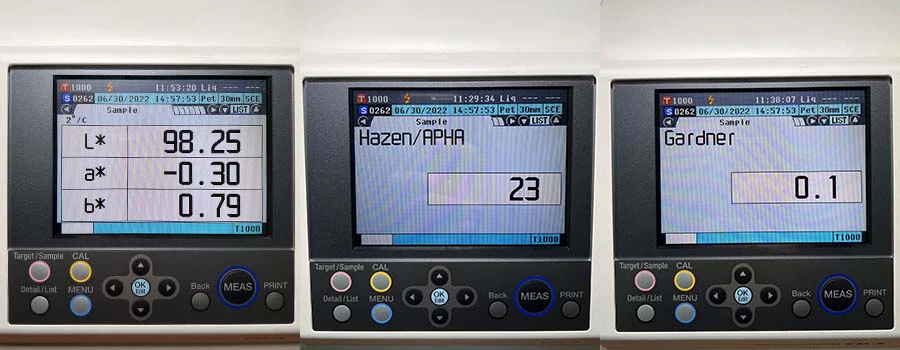Color Measurement of Liquid Chemicals Made Simple

Chemicals are essential components of the modern world, used in a wide variety of industries, including automotive, paints and coatings, personal care, plastics, etc. As such, chemicals must be held to stringent quality control measures to fulfill their intended purpose and meet expected specifications. This includes measuring the color of chemicals as part of this process to ensure consistent quality and identify any impurities or contaminants.
Liquid Chemicals Color Assessment
Various color systems and indices are available for color measurement, and the most common of all is the CIE LAB color system. This system is based on the human visual perception of color and is used as a standard for measuring and defining color in various applications. The CIE LAB uses a three-dimensional color space represented by three parameters: L* for lightness, a* for the red-green axis, and b* for the yellow-blue axis.
In addition to CIE LAB, a variety of different industrial standard color scales like Platinum-Cobalt (APHA/Hazen), Gardner, etc., can also be used to assess the color of liquid chemicals. The earliest form of these industrial standard color scales comprises a series of reference solutions with small variations in color and shade between each one. The chemical sample is then visually compared against these reference solutions to find the right match. The drawback of these industrial standard color scales is the fact that the color of these reference solutions tends to fade over time. Furthermore, visual color matching is subjective and leaves room for interpretation, e.g., what one person perceives as a certain color might not match another’s opinion.
Instrumental Color Measurement of Liquid Chemicals
A more objective approach to using industrial standard color scales is through the spectrophotometry method. This method is increasingly used by many within the chemical industry as it offers a more accurate and consistent way of performing color scale readings without the need to prepare and handle the reference solutions. It involves taking the absorbance or transmittance measurements of the liquid chemical from the spectrophotometer and transforming them into numerical data. Calculation formulas are then applied to the numerical data to process them into the industrial standard color scales.
The Konica Minolta Spectrophotometer CM-5 is a stand-alone and versatile benchtop spectrophotometer that can measure and express the color of liquid chemicals in CIE LAB and several of the industrial standard color scales like Platinum-Cobalt (APHA/Hazen), Gardner, Iodine, etc. Furthermore, users can also create custom indices when using the CM-5 with the color data software SpectraMagic NX.

Chemical color measurement with Spectrophotometer CM-5: CIE LAB, Platinum-Cobalt (Hazen/APHA), and Gardner
Besides liquid, the CM-5 can also measure a wide array of samples, including pastes, powders, solids, etc. Check out this video to find out more about the different features of CM-5.
Color measurement instruments and solutions are integral to chemical development and quality control. If you require assistance finding the right ones for your specific needs, our color specialists are here to help. Get in touch with us for a free consultation now.
